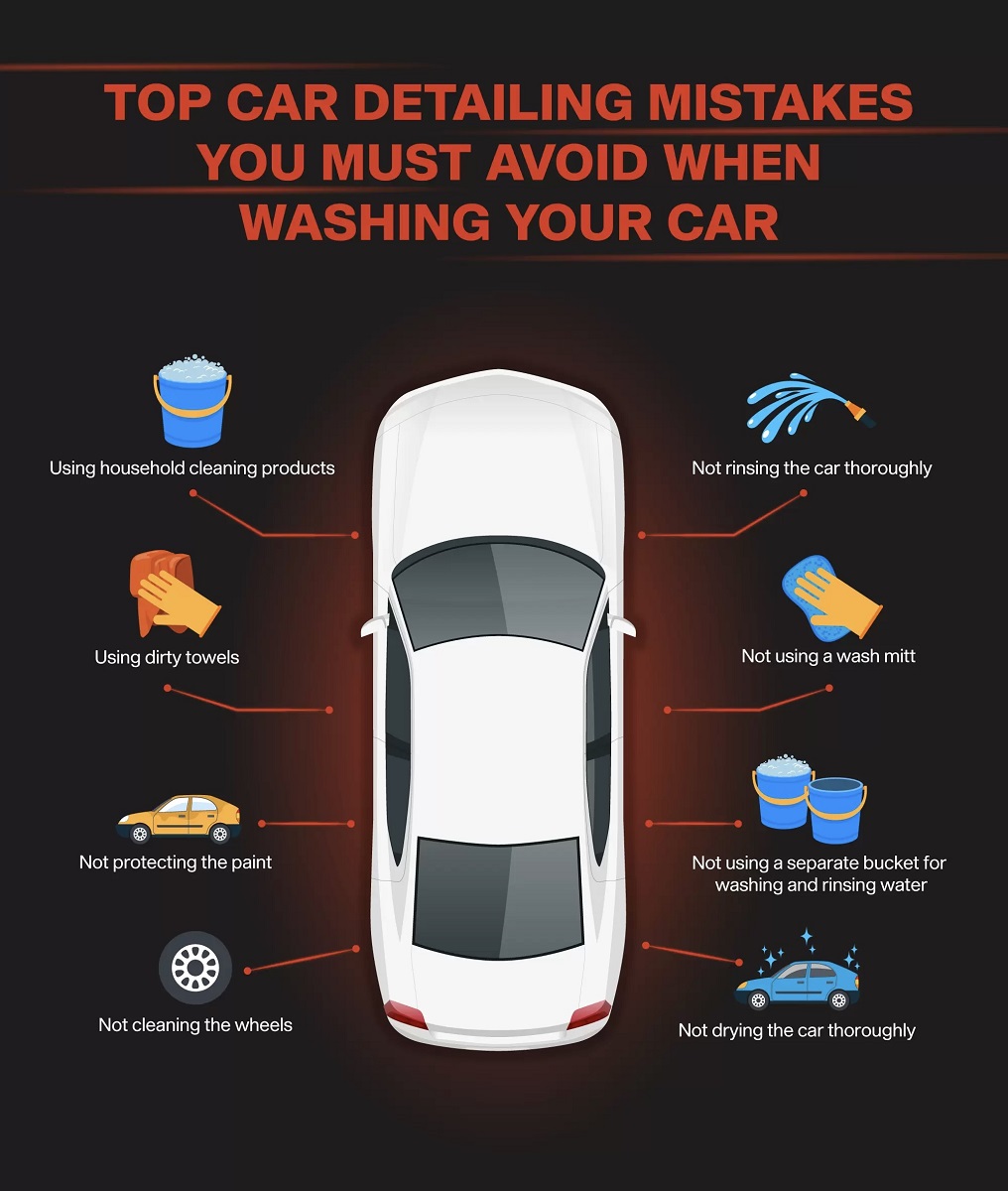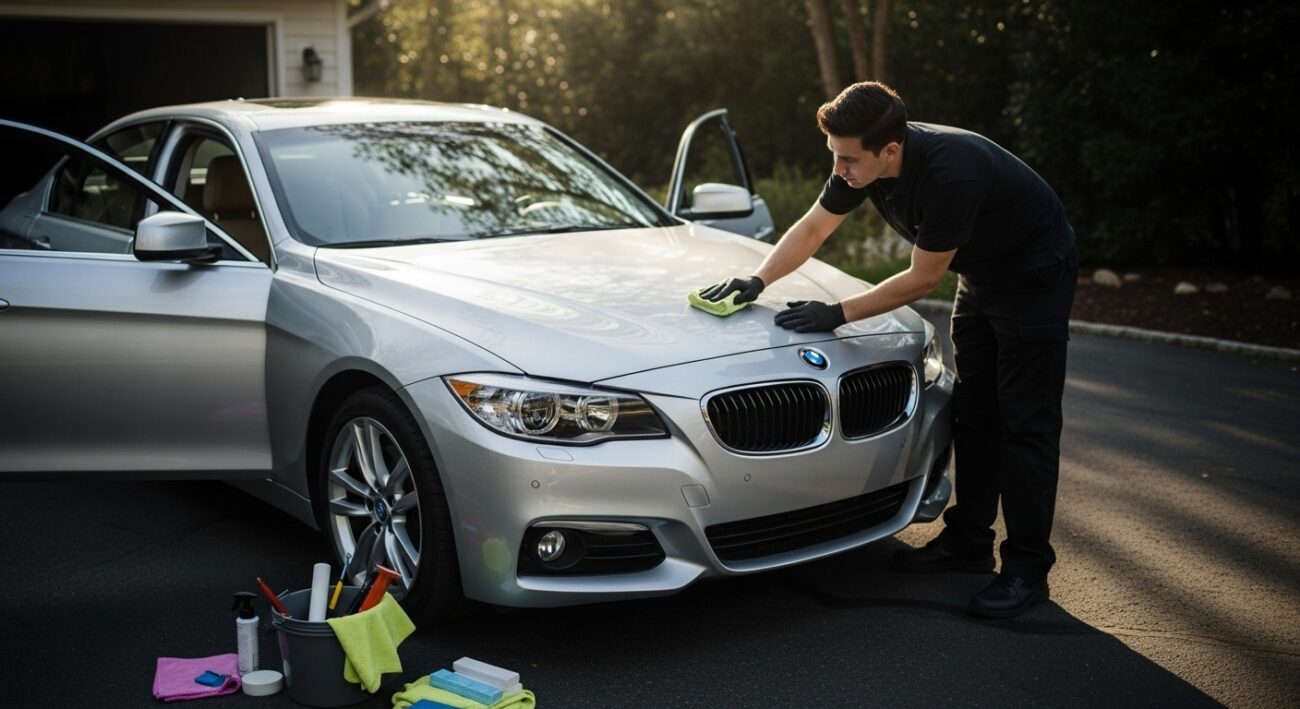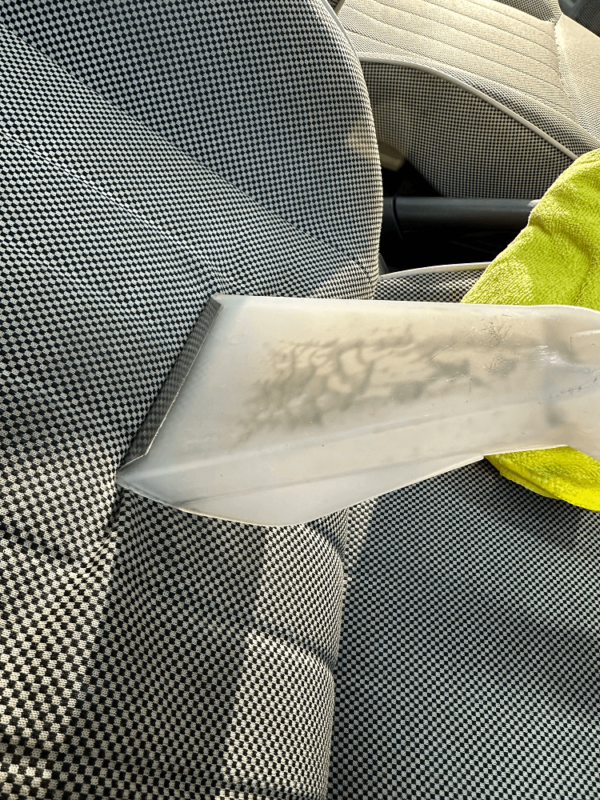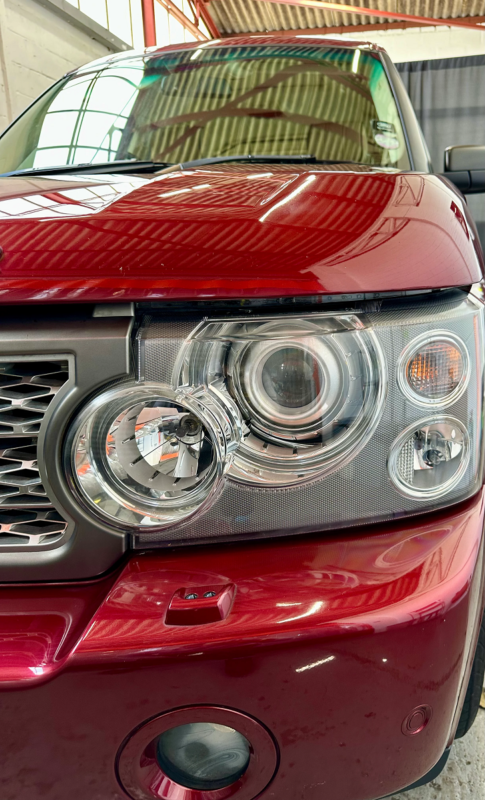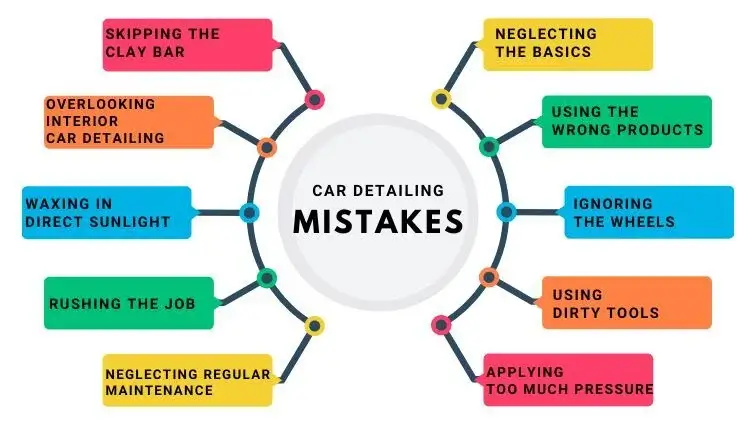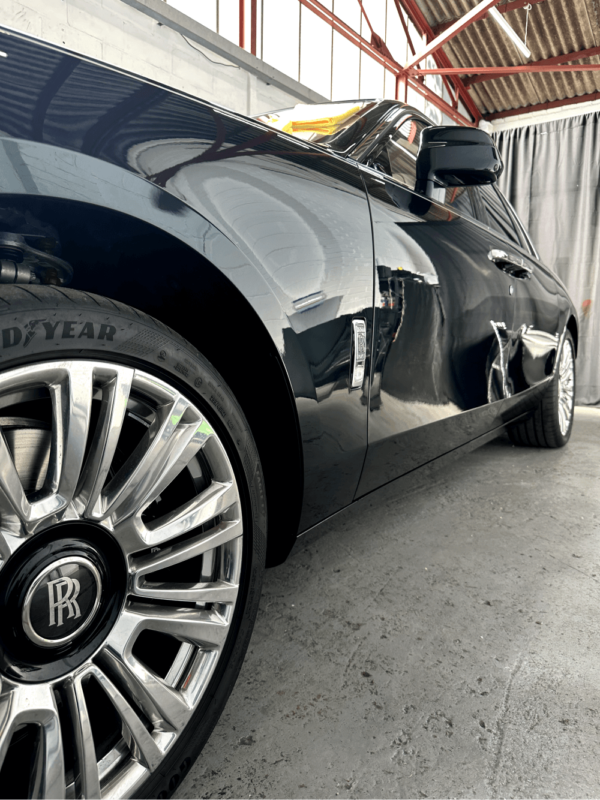Top 10 Mistakes People Make When Washing Their Car (and How to Avoid Them!)
Washing your car seems straightforward, but it’s easy to make mistakes that can damage your vehicle’s finish. In this post, I’ll reveal the top 10 mistakes people make when washing their cars and how to avoid them. Whether you’re a novice or a seasoned car owner, this guide is packed with valuable tips to help you keep your car looking its best while saving time and money.
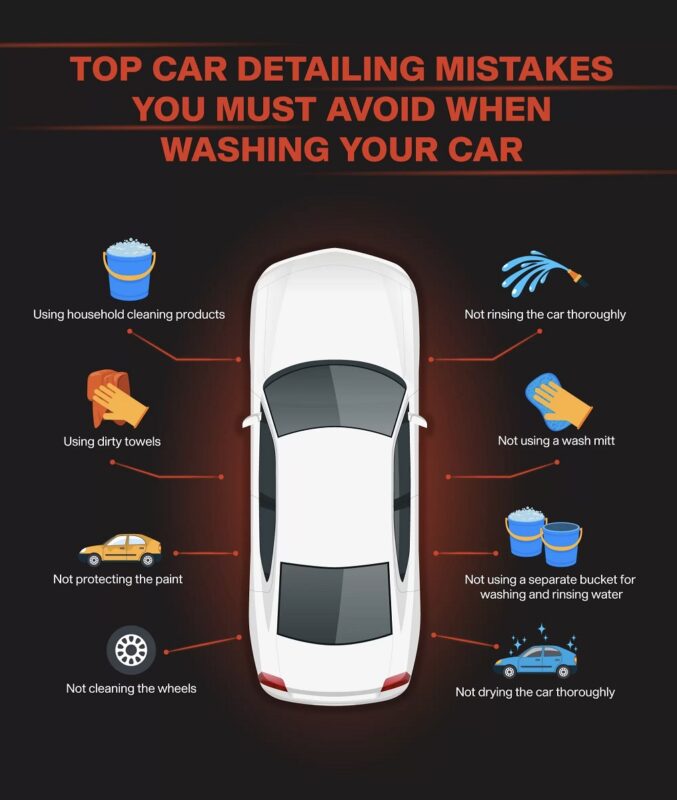
How Often Should You Wash Your Car?
Washing your car regularly is crucial, but how often should you do it? Many overlook this, resulting in a dirty car and potential damage over time.
The general recommendation is to wash your car every two weeks. This frequency helps remove dirt, salt, and other contaminants that can harm your car’s paint. However, if you live in an area with harsh weather conditions or near the coast, more frequent washes might be necessary to protect your vehicle from the elements.
Regular washing keeps your car looking clean and maintains its value and appearance. Consistency is vital; make it a routine part of your car maintenance to ensure it stays in top condition.
What Are the Best Products for Washing Your Car?
Choosing the right products for washing your car is essential to avoid damaging the paint and finish. Household detergents like dish soap can strip away wax and harm your car’s paint.
Invest in a high-quality car wash soap specifically formulated for automotive use. Look for products that are pH-balanced and free of harsh chemicals. A dedicated car wash soap will be gentle on your car’s finish while removing dirt and grime.
Additionally, using the right tools, such as a microfiber wash mitt and a grit guard bucket, can make a significant difference. These tools help minimise the risk of scratches and swirls on your car’s surface.
Why Is Using the Right Technique Important?
Proper technique is crucial when washing your car. Many people make the mistake of using circular motions, which can create swirl marks and scratches on the paint.
The best technique is to use a straight-line method, moving your wash mitt in a linear motion rather than circles. This reduces the risk of creating noticeable scratches. Start from the top of the car and work your way down to avoid contaminating cleaner areas with dirt from lower sections.
Another important tip is to rinse your wash mitt frequently to remove dirt and debris. This prevents scratching and ensures a thorough cleaning.
How Can Improper Washing Damage Your Car’s Paint?
Improper washing techniques can significantly damage your car’s paint over time. One of the most common mistakes is washing your car under direct sunlight. The heat can cause the soap to dry too quickly, leaving spots and streaks on the paint.
Another standard error is using dirty water or tools. Always use clean, fresh water and a grit guard in your bucket to trap dirt particles. This prevents those particles from being reintroduced to the car’s surface and causing scratches.
Lastly, avoid using abrasive materials like old rags or brushes. Stick to soft, non-abrasive materials designed for automotive use to protect your paint.
Is It Necessary to Wax Your Car After Washing?
Waxing your car after washing is an essential step that many people skip. Wax provides a protective layer on your car’s paint, shielding it from UV rays, dirt, and water.
After washing and drying your car, apply a high-quality wax using a foam applicator pad. Work in small sections, applying the wax in a circular motion. Allow it to haze, then buff it off with a clean microfiber cloth for a brilliant shine.
Regular waxing keeps your car looking new and makes future washes easier by preventing dirt and grime from adhering to the paint.
How Do You Clean Your Car’s Interior Properly?
Cleaning your car’s interior is just as important as the exterior. A clean interior enhances your driving experience and maintains the vehicle’s value.
Start by removing all trash and clutter from the inside of your car. Vacuum the seats, carpets, and floor mats thoroughly. For hard surfaces like the dashboard and console, use a mild cleaner and a microfiber cloth to wipe them down.
Don’t forget to clean the windows and mirrors with a dedicated glass cleaner. A streak-free finish will improve visibility and give your car a polished look.
What Are the Common Mistakes in Cleaning Upholstery?
Cleaning upholstery requires careful attention to avoid damage. One common mistake is using too much water or cleaner, which can soak into the seats and cause mould or mildew.
Instead, gently scrub the seats with a small amount of upholstery cleaner and a soft brush. Blot the area with a clean, dry cloth to remove excess moisture.
Use a dedicated leather cleaner and conditioner for leather seats to keep the material supple and prevent cracking. Regular maintenance of your car’s upholstery will keep it looking new and fresh.
Should You Polish Your Car Regularly?
Polishing your car is essential in maintaining its appearance, but it’s often misunderstood. Polishing removes minor scratches and imperfections, restoring the paint’s shine.
You don’t need to polish your car every time you wash it. Aim to polish your vehicle a few times a year, depending on its condition and exposure to the elements. Use a high-quality polish and a dual-action polisher for the best results.
Regular polishing will keep your car’s paint vibrant and smooth, enhancing its overall appearance.
How to Avoid Scratching Your Car During Washes?
Scratches are standard daily during car washes but can be avoided with proper precautions. First, rinse your car thoroughly before washing to remove loose dirt and debris.
Use the two-bucket method: one bucket for soapy water and another for rinsing your wash mitt. This helps prevent dirt from being reintroduced to your car’s surface.
Lastly, dry your car with a soft, clean microfiber towel instead of air drying or using an abrasive cloth. This reduces the risk of scratches and leaves a spotless finish.
What’s the Best Way to Dry Your Car?
Drying your car correctly is crucial to prevent water spots and streaks. Many people make the mistake of letting their car air dry, which can leave unsightly marks on the paint.
A clean, soft microfiber towel is the best way to dry your car. Start from the top and work your way down, blotting the water rather than wiping it. This method reduces the risk of scratching and leaves a smooth, clean surface.
Consider using a car drying blower to remove water from hard-to-reach areas like mirrors and trim for an even better finish. A thorough drying process ensures your car looks its best after every wash.
Bullet Point Summary
- Frequency of Washing: Wash your car every two weeks to maintain its appearance and protect the paint.
- Right Products: Use car-specific wash soaps and tools to avoid damaging the paint.
- Proper Techniques: Wash in straight lines, rinse frequently, and avoid washing under direct sunlight.
- Waxing: Apply wax after washing for added protection and shine.
- Interior Cleaning: Vacuum and clean surfaces regularly to maintain a clean interior.
- Upholstery Care: Use appropriate cleaners and avoid soaking seats to prevent mould.
- Polishing: Polish your car yearly to remove imperfections and restore shine.
- Scratch Prevention: Use the two-bucket method and soft materials to avoid scratches.
- Drying: Use a microfiber towel or car drying blower to prevent water spots and streaks.
For professional detailing services or more expert tips, visit QC Detailing. They offer top-quality car care to keep your vehicle looking its best.

